A driverless car is a type of smart car, also known as a wheeled mobile robot, which relies mainly on a computer-based smart pilot in the car to achieve the goal of unmanned driving.
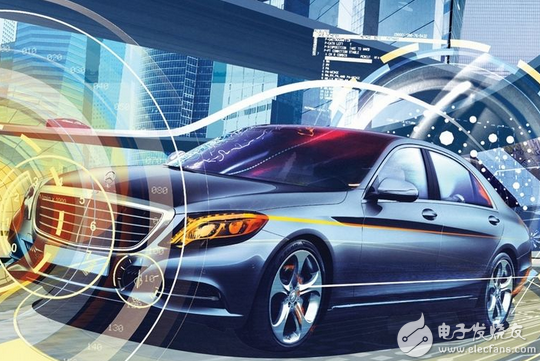
According to Thomson Reuters' latest report on intellectual property and technology, between 2010 and 2015, more than 22,000 invention patents related to automotive driverless technology, and in the process, some companies have emerged as industry leaders in the field. .
What is driverless technology?
Automated driving technology is a kind of unmanned intelligent car running technology controlled by real-time system. It relies on artificial intelligence, visual computing, radar, monitoring devices and several technologies in global positioning system technology to cooperate on the car. The on-board computer can automatically and safely operate the car without any human active operation.
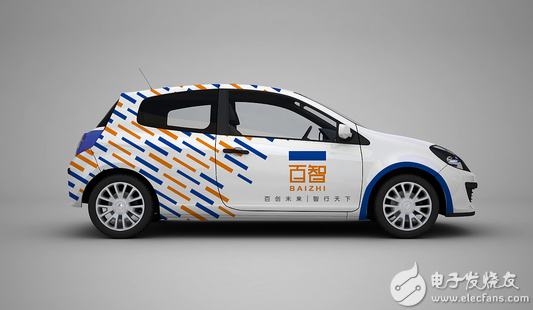
In the auto-driving technology of automobiles, according to the low-end to high-end, it can be generally divided into: non-automatic, partial-function automation, multi-function-linked automation, limited auto-driving, and full auto-driving. With the development of technology, complete auto-driving technology will be realized in the near future.
Principle of automatic driving
The realization of the auto-driving technology of the car is to collect the image of the road surface through the camera (or determine the distance with the assistance of the radar and the laser detector), and use the image analysis program of the vehicle automatic driving technology to make a judgment on the current environment, and issue corresponding instructions to control The driving state of the vehicle changes. The specific implementation steps are as follows:
1: Use high-precision camera to collect road information (or radar, laser and other distance sensors to simultaneously measure the distance of road abnormal information)
2: The image information and the distance information are transmitted to the vehicle control center, and the road information is processed and sent to the vehicle control unit.
3: The vehicle control unit performs an operation of changing the traveling state of the vehicle according to the instruction of the second step. Deep neural network technology is used in this series of instruction judgment techniques.
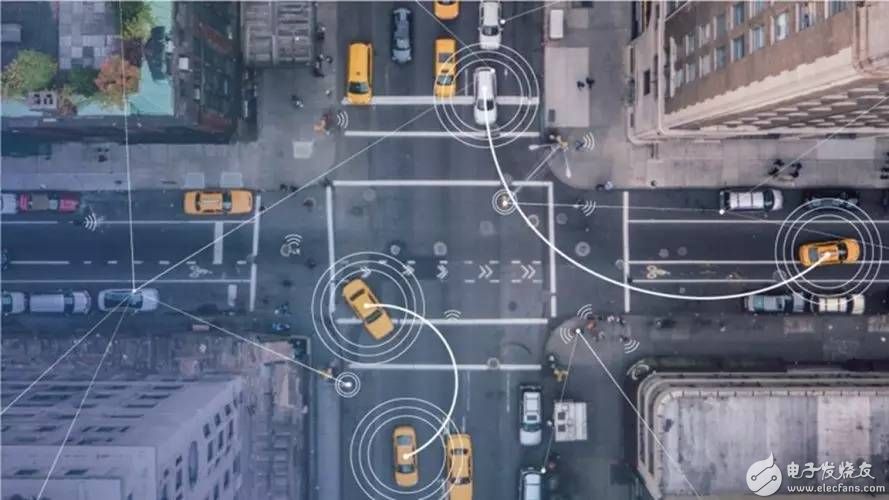
Key technology
Artificial intelligence, visual computing, radar, monitoring devices and global positioning system technology are the centralized technologies commonly used in automotive autonomous driving technology. These technologies can be used to obtain information on the road during the driving process of the vehicle. The accuracy of the information acquisition is directly related to the accuracy. The safety of car autopilot. To summarize the above technologies, they can be divided into the following four items:
Sensor technology : Sensor technology is directly linked to the real world and automotive control systems, and sensor technology includes image sensors and distance sensors. In the auto-driving car, there are common single camera, multi-camera, Doppler radar (short-range radar, long-range radar, laser radar), GPS positioning device, etc. These sensors form the eyes of the car driving automatically, seeing the road All kinds of things.
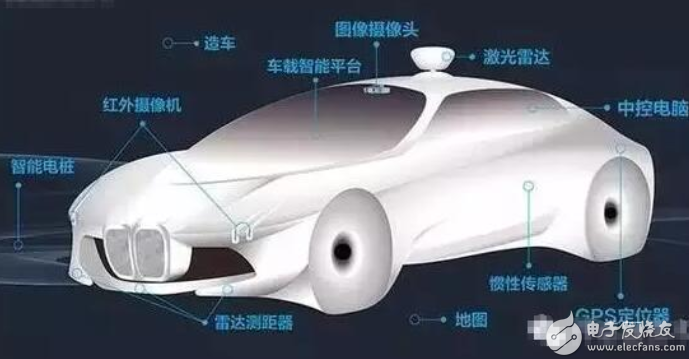
Vehicle electronics : Automotive electronics are characterized by reliability, safety and stability. The central processing unit in automotive electronics must meet the above requirements while being able to process data collected by multiple sensors. Only in this way can the car's "brain" (central processing unit) use the "neural network" (CAN bus) to control the "four limbs" (four wheels of braking, acceleration and steering) through the "brain" (central processing unit) of the car. purpose.
Operational control technology : The computer control system combines the processing results with the operating hardware to achieve acceleration deceleration, brake parking, reverse direction avoidance, and man-machine dialogue, etc. Through the operation control system in the automatic driving technology, the driverless car can be made. It has the ability to replace manual manipulation, which mainly performs data analysis, data modeling, data judgment and vehicle status adjustment.
Network transmission technology : Drivers must be able to get on the road, and must have Internet, LAN and road environment identification functions, including car-to-car contact dialogue, car and satellite communication, car and weather forecast contact, vehicle and traffic command network The contact can correctly identify and select the road, correctly obey the command of the traffic police, correctly decide to cross the intersection, correctly avoid danger and safe driving. The acquisition and processing of such information must be carried out through the network for data and information transmission. In the process of information transmission, the security of the information also requires special attention.

After years of development, the vehicle autopilot technology has been greatly improved, and it is believed that the fully automatic vehicle driving technology will be widely used in the near future. However, auto-driving still suffers from weather challenges, anthropomorphic challenges and challenges of efficiency, price, and practicality.
Currently the world's leading driverless technology manufacturer:
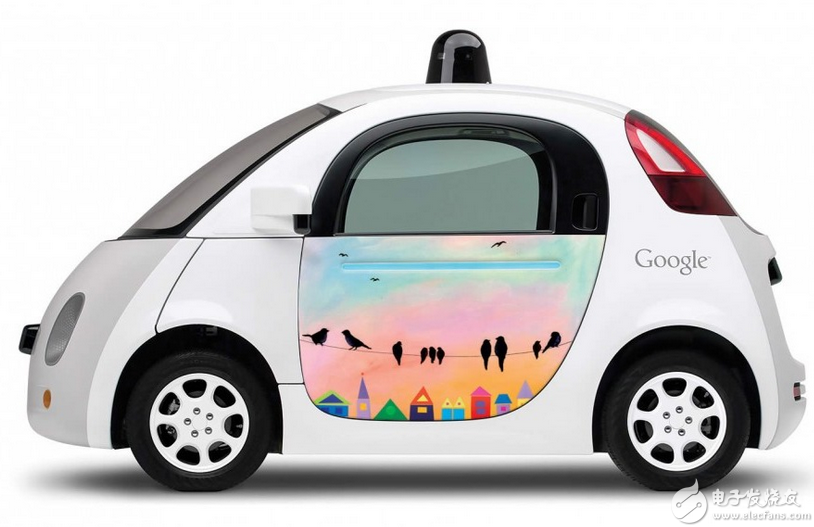
Baidu
Baidu began in 2015, has been in public testing its autonomous vehicle technology, and cooperation with BMW in December of that year the BMW 3 series completed 18.3-mile route (now ended cooperation with BMW), including lane change and turn around. Baidu also conducted a series of tests for the public in 2016. It is said that it will launch market-oriented products and plan to mass production in 2021.
nuTonomy
nuTonomy is a Boston-based startup that went out of MIT in 2013. In August 2016, nuTonomy launched a pilot project for taxi autopilot in Singapore and plans to expand the pilot to Boston.
In December last year, nuTonomy gained $20 million, including investors from the Singapore government and Ford executive chairman Bill Ford, a venture capital fund called Fontinalis Partners.
Uber
Although Uber conducted a massive drone test in Pittsburgh last September, its ranking is not high. Uber launched the autopilot pilot in San Francisco last year without autonomous driving test license, and caused a lot of controversy. After the authorities revoked the registration of their 16 Volvo self-driving cars, Uber left California and turned to Arizona, but soon a car accident occurred during the test.
In January of this year, Uber and Daimler reached a cooperation. Recently, Uber was accused by Google of stealing the intellectual property of its driverless technology, and Uber was once again in crisis.
Honda Honda in California have automated driving license test, but only in 2016, and now they might be in Google's Waymo cooperation.
ZF
As a German company, former US President Barack Obama has visited ZF's collision avoidance and autonomous driving techniques. Former CEO Sommer increased the scores after commercializing its autonomous driving system ProAI and nVidia's PX2 processing platform at the 2017 CES show. ZF is the first company to put the nVidia computing platform into production. It is expected that around 2020, ProAI will appear in production cars.
Toyota's driverless strategy is more conservative than other companies, but the company is still making plans to invest $1 billion over the next five years. Toyota's research focuses on how to make cars not collide.
Navigant believes that Toyota's manufacturing capabilities are strong and it has complete autonomous vehicle production resources and expertise.
Tesla
Designed to maintain a high share price of unmanned Tesla's unexpectedly low, Navigant doubts its ability to reach Level 4 technology.
Tesla is now building a new model to improve Tesla's automated driving system and rename the system to Autopilot 2. Tesla plans to drive the car from Los Angeles to New York in 2017.
After the first application of Autopilot in 2015, Tesla's collision rate dropped by 40%, but after Navigant believed that Tesla's technology faced a huge challenge after a series of fatal accidents, the National Highway Traffic Safety Administration It shows that there is nothing wrong with the automatic driving system because the driver has enough time to intervene and avoid accidents. But as the Navigant report points out, some drivers abuse the system and do other things.
Navigant also suspects that Tesla achieved the fourth level of fully automated driving without Lidar technology. The reason for Tesla's opposition to this technology is that Lidar is too expensive. Google's custom laser radar costs as much as $80,000. If you install the technology on all Tesla cars, it will greatly increase the cost.
Peugeot Citroen
PSA Peugeot Citro龙n is currently the second largest car manufacturer in Europe and plans to have a completely driverless car on the road by 2020. In October 2015, their self-driving cars used to drive 360 ​​miles in Paris and Bordeaux.
The ZF mentioned in the previous year will provide camera, radar and software technology for Peugeot Citroen, which will be on the road in 2018.
modern
Hyundai has begun to develop advanced driver assistant systems, adding the lane keeping assistant function to the 2016 new Elantra. Hyundai plans to add autopilot functionality to its 2020 car, but full autopilot needs to wait until 2030.
At CES 2017, Hyundai demonstrated the prototype of the self-driving Ioniq electric car.
Delphi
As a supplier of automotive electronic components, Delphi plans to release autonomous vehicles for the general public in 2022. Delphi's modified self-driving Audi has completed a journey across the United States in 2015.
In November 2016, Delphi also signed an order with Intel to agree to purchase an Intel-produced autopilot system-specific processor. Intel recently spent $15.3 billion on the autopilot company Mobileye.
Delphi is the highest-scoring auto parts supplier in this ranking, and it took only three years to get to the forefront.
Volvo
Volvo said it will gradually add semi-automatic driving technology to its vehicles and achieve the goal of "deathproof" by 2020. As part of the Drive Me autonomous driving program, Volvo's self-driving cars will begin testing in Gothenburg, Sweden and London.
In addition, Volvo will also lead a project called “Advanced Autopilot Experiment†in China. 100 volunteers will participate in the road test of the unmanned Volvo XC90s. So far, the test time has not been announced.
Volvo and Uber August last year to reach $ 300 million agreement to develop autonomous vehicles child, present the relevant vehicle has traveled on the road in Arizona, but open on the road last week Uber autonomous vehicles overturned due to an accident.
Google Waymo
Waymo, Google's unmanned car driving program, has only won the 7th place. Since Google launched the autopilot program in 2009, Waymo has driven more than 2 million miles.
Waymo is currently working with Fiat Chrysler and reports that they will start the robotic taxi service by the end of 2017. The company will manufacture all the hardware in the car and may reduce the price of the laser radar by 90%.
Waymo does not produce vehicles on its own, but instead provides partners with autonomous driving platforms.
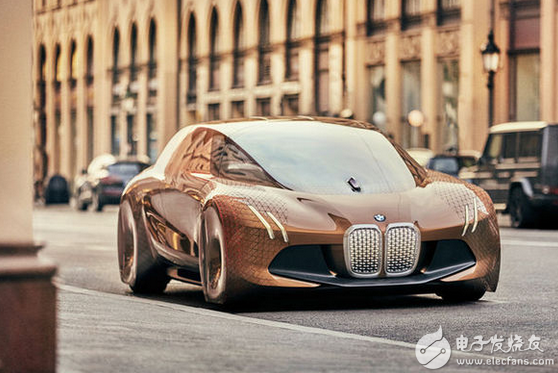
BMW
BMW has released advanced frame assist technology on its luxury cars, such as the BMW 7 Series and 5 Series. Its DriverAssistant Plus technology includes lane assist, parking assistance and traffic jam assist.
BMW plans to release a fully self-driving car in 2021 and will work with Mobileye, which was just acquired by Intel.
public
Volkswagen has been researching autonomous driving technology since 2006, and its Audi brand, Audi, was the first company in Nevada to receive a self-driving car license in 2012 and has also obtained a license in California.
In 2015, the Audi A7 traveled 550 miles in autonomous driving mode from Silicon Valley to Las Vegas. Recently announced the cooperation with nVidia and plans to launch autonomous vehicles in 2020.
Daimler
Daimler installed a semi-automatic driving system in the Mercedes S and E sedan.
Daimler plans to develop self-driving trucks by 2020. Navigant believes that Daimler has become a leader in the development of driverless technology, but as a high-end brand may be far away from the general public.
Renault-Nissan
Renault-Nissan has launched the autopilot car ProPILOT, which allows cars to drive automatically on the highway. Renault-Nissan plans to launch ProPILOT in Europe, the US and China, with the goal of gradually adding autopilot technology to ProPILOT before achieving fully autonomous technology in 2020.
General Motors
In 2016, GM acquired Cruise Automation, an autonomous driving technology startup, for $581 million.
GM CEO Mary Barra said on the 12th that the company will begin testing the Chevrolet driverless electric car in Michigan, which will also test in Arizona and San Francisco. She told the media that GM would focus on testing driverless technology in different road conditions to ensure safety.
Ford
Ford's goal is to launch a fully driverless car by 2021, and now Ford's driverless fleet is tuned to 100 and is currently being tested in Arizona, Michigan and California.
Ford said it wants more people to afford driverless cars.
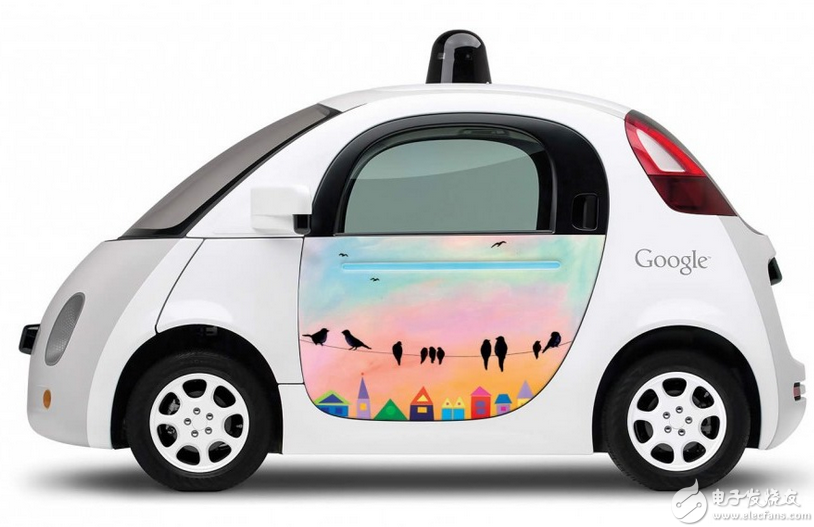
History of China's driverless technology:
China's self-developed unmanned vehicle - the red flag HQ3 unmanned vehicle independently developed by the National University of Defense Technology. On July 14, 2011, the first high-speed unmanned pilot test from Changsha to Wuhan was completed for the first time. The new record of autonomous vehicles driving in a complex traffic situation indicates that Chinese unmanned vehicles have achieved new technological breakthroughs in complex environmental identification, intelligent behavior decision-making and control, reaching the world's advanced level.

The Hongqi HQ3 unmanned vehicle was independently developed by the National University of Defense Technology. In mid-July 2011, it departed from the Changsha Yangxichong toll station of the Beijing-Zhuhai Expressway and arrived in Wuhan in 3 hours and 22 minutes. The total distance was 286 kilometers. In the experiment, the unmanned vehicle overtakes 67 times autonomously, encountering complex weather, some roads are foggy, and there is still rainfall in Xianning.
The red flag HQ3 is controlled by the computer system to control the speed and direction of the vehicle. The maximum speed set by the system is 110 km. During the experiment, the measured average autonomous driving speed was 87 km. According to the National University of Defense Technology, the distance of manual intervention by the vehicle under special circumstances is only 2.24 kilometers, accounting for only 0.78% of the total mileage of autonomous driving.
Since the end of the 1980s, under the leadership of Professor He Hangen, in 2001, the company successfully developed an unmanned vehicle with a speed of 76 kilometers per hour. In 2003, it successfully developed China's first high-speed unmanned passenger car with a top speed of 170 kilometers per hour. The new generation of unmanned red flag HQ3 has made a breakthrough in reliability and miniaturization. The Red Flag HQ3 unmanned vehicle experiment successfully created a new record of China's self-developed unmanned vehicles driving independently under complex traffic conditions, which indicates that China has reached the world's advanced level in this field.
By 2020, drivers will no longer have to worry about car rear-end collisions. "The driverless car will detect the distance from the front car through its own radar system. If it is too close to the car, the car will automatically brake."
By 2030, the driver can basically control only the steering wheel or only the throttle and brakes in more complicated road conditions, because semi-automatic driving technology will be applied to most vehicles, when the car will automatically set the route or automatically throttle and Brake fit.
The National Natural Science Foundation of China said that China's self-developed driverless cars will be tested from Beijing to Tianjin in 2013 and will be tested from Beijing to Shenzhen in 2015.
Baidu driverless car
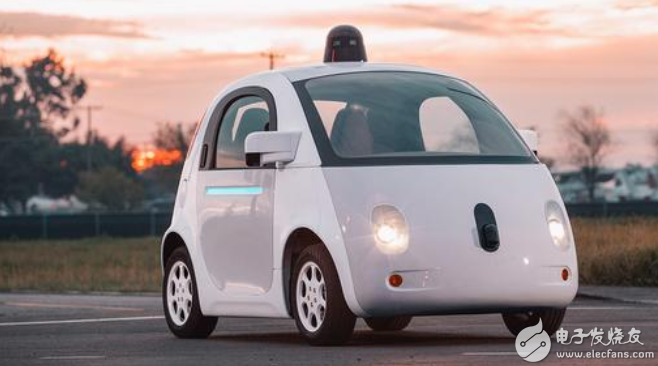
On July 24, 2014, the reporter confirmed from Baidu that Baidu has launched a driverless car R&D program.
According to the plan, the driverless car can automatically identify traffic signs and driving information, and has electronic facilities such as radar, camera, global satellite navigation, and install synchronous sensors. As long as the owner enters the destination into the navigation system, the car can automatically travel to the destination. During the driving process, the car will upload the road condition information through the sensing device, and perform real-time positioning analysis on a large amount of data to judge the driving direction and speed.
Baidu confirmed that Baidu has applied visual and auditory recognition technologies to the development of unmanned vehicle systems. The Baidu Deep Learning Institute is responsible for the project.
Tsinghua driverless car
In the early 1990s, Tsinghua University began researching related technologies for unmanned vehicles. In the late 1990s, the unmanned test platform THMR series of unmanned vehicles developed by Tsinghua University came out.
In 2003, Tsinghua University successfully developed the THMR-V (Tsinghua Mobile Robot-V) unmanned vehicle, which can complete the patrol line on the structured road with clear lane line, and the maximum speed exceeds 100km/h.
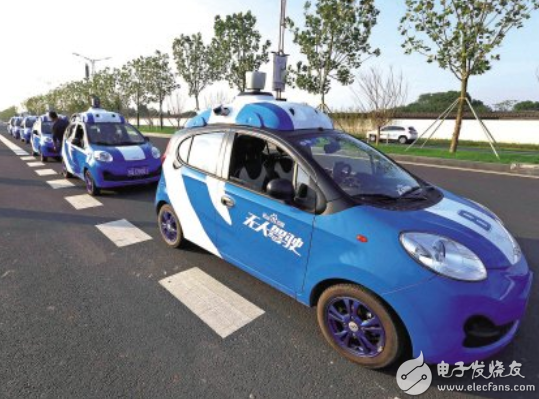
In 2008, the Chinese Academy of Engineering Li Deyi led a team of Tsinghua University smart car team. The Tsinghua University smart car team is affiliated to the Department of Computer Science and Technology of Tsinghua University. There are more than 20 teachers and doctoral students. Mainly engaged in the development of automotive driverless, specifically related to image recognition, navigation and positioning, vehicle transformation, artificial intelligence software algorithms. At present, there are a number of open road unmanned driving experiments, and the unmanned driving distance exceeds 300,000 kilometers. It is at the top level in the field of domestic artificial intelligence and has a high reputation. Tsinghua University's smart car team has participated in the China Smart Car Future Challenge many times and achieved the second and third outstanding results.
Summary: At present, the unmanned technology is still in the stage of continuous improvement and perfection. The technology maturity is not perfect. There are many security risks. Just like the google and Baidu unmanned car accidents reported by the media before, the technology has not given a sense of security. Let many people look down on the future of driverless driving! In fact, the electronic enthusiasts Xiaobian feel that the future of driverless technology is still beautiful, and technological breakthroughs and progress are just around the corner. After all, for manufacturers who have invested a lot of money and manpower, they are really pushing this technology. I believe that in the next five to ten years, the development of driverless technology and solutions, driverless cars can be seen everywhere! It’s time for technology to change lives! As an observer, we need to polish our eyes, treat everything objectively, don't follow the trend, do a correct attitude toward unmanned driving, give technology developers some patience, come on, unmanned!
(This article is published by electronic enthusiasts. It is forbidden to reprint without permission, thank you!)
ZGAR bar 2000 Puffs
ZGAR electronic cigarette uses high-tech R&D, food grade disposable pod device and high-quality raw material. All package designs are Original IP. Our designer team is from Hong Kong. We have very high requirements for product quality, flavors taste and packaging design. The E-liquid is imported, materials are food grade, and assembly plant is medical-grade dust-free workshops.
Our products include disposable e-cigarettes, rechargeable e-cigarettes, rechargreable disposable vape pen, and various of flavors of cigarette cartridges. From 600puffs to 5000puffs, ZGAR bar Disposable offer high-tech R&D, E-cigarette improves battery capacity, We offer various of flavors and support customization. And printing designs can be customized. We have our own professional team and competitive quotations for any OEM or ODM works.
We supply OEM rechargeable disposable vape pen,OEM disposable electronic cigarette,ODM disposable vape pen,ODM disposable electronic cigarette,OEM/ODM vape pen e-cigarette,OEM/ODM atomizer device.

Disposable Vape, bar 2000puffs, ZGAR bar disposable, Disposable E-cigarette, OEM/ODM disposable vape pen atomizer Device E-cig
ZGAR INTERNATIONAL(HK)CO., LIMITED , https://www.zgarecigarette.com